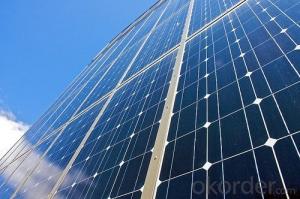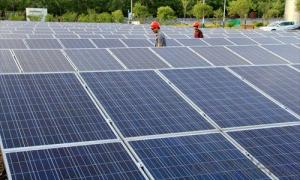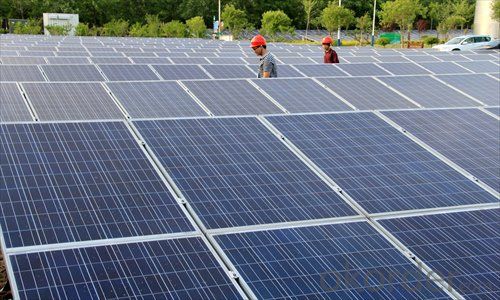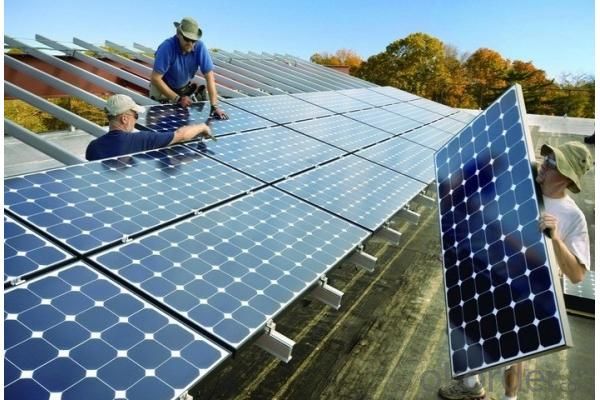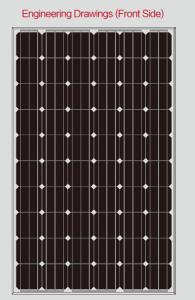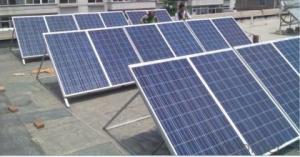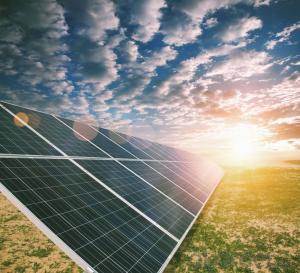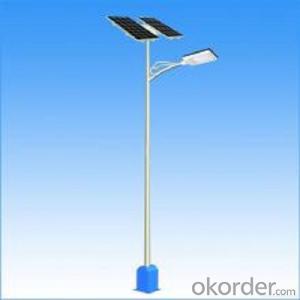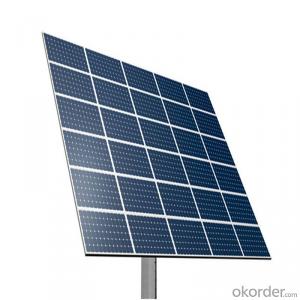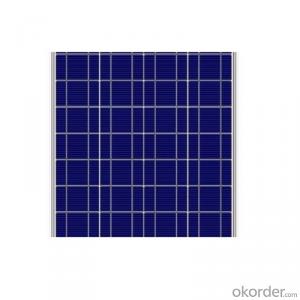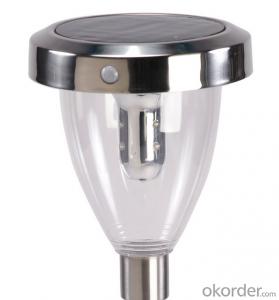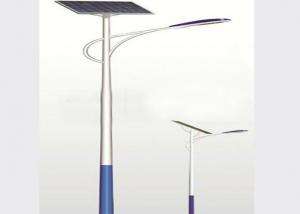800 Watt Solar Panels for Path Lights Solar Energy
- Loading Port:
- China main port
- Payment Terms:
- TT OR LC
- Min Order Qty:
- 10000 watt
- Supply Capability:
- 100000000 watt/month
OKorder Service Pledge
OKorder Financial Service
You Might Also Like
Specification
Solar Monocrystalline 125mm Panel Series(45W-50W)
Product Description
Monocrystalline Silicon Solar Panel (45-50W)
• 10 years 90% output warranty
• 20 years 80% output warranty
• High conversion efficiency mono/poly-crystalline amorphous silicon solar cells
• Modules incorporate high performance bypass diodes to minimize the power drop caused by shading
• High transmittance, low-iron tempered glass
• High performance EVA encapsulate to prevent destroying and water.
• AI frame: without screw, corner connection. 8 holes on the frame can be installed easily
• Good performance of preventing from atrocious weather such as wind and hails
• Certifications: CE IEC TUV VDE UL, Class I
Details
Characteristics | |||
Max Power Voltage Vmp (V) | 17.4V | 17.8V | |
Max Power Current Imp (A) | 2.59A | 2.81A | |
Open Circuit Voltage Voc (V) | 22.4V | 22.6V | |
Short Circuit Current Isc (A) | 2.75A | 2.99A | |
Max Power Pm(W) | 45W | 50W | |
Temperature Coefficient of Cells | |||
NOCT | 47℃±2℃ | ||
Temperature Coefficients of Isc (%/℃) | +0.06% | ||
Temperature Coefficients of Voc (%/℃) | -0.33% | ||
Temperature Coefficients of Pmp (%/℃) | -0.45% | ||
Mechanical Data | |||
Type of Cells(mm) | Mono125×62.5 | ||
Dimension | 630×550×30mm | ||
Weight | 4.5kg | ||
NO. of Cells and Connections | 2×18=36 | ||
Limits | |||
Operating Temperature | –45 °C to +80°C | ||
Storage Temperature | –45 °C to +80°C | ||
Max System Voltage | 700v | ||
Guarantee | |||
Products Guarantee | 5yrs free from defects in materials and workmanship | ||
Performance Guarantee | No less than 90% within 10yrs and no less than 80% within 20yrs | ||
Certificates | IEC, ISO, CE,TUV | ||
Certificate

Images
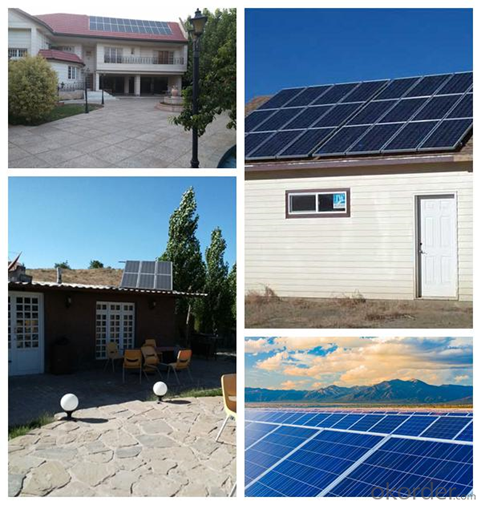
FAQ1
We have organized several common questions for our clients,may help you sincerely:
1.What price for each watt?
It depends on the quantity, delivery date and payment terms,
2.How do you pack your products?
We have rich experience on how to pack the panels to make sure the safety on shipment when it arrives at the destination.
- Q: Can solar panels be installed on historical or protected buildings?
- Yes, solar panels can be installed on historical or protected buildings. However, the installation process may require careful planning and consideration to preserve the building's historical integrity. This typically involves working closely with preservation experts, architects, and local authorities to find suitable installation methods that minimize visual impact and potential damage to the structure.
- Q: Do solar panels require a specific orientation or angle for optimal performance?
- Yes, solar panels do require a specific orientation and angle for optimal performance. Generally, it is recommended to install solar panels facing south and at an angle equal to the latitude of the installation location. This allows the panels to receive maximum sunlight throughout the day, maximizing their energy production. However, panels can still generate electricity when facing other directions or at different angles, although their efficiency may be slightly reduced.
- Q: Can solar panels be used in areas with high levels of air pollution?
- Yes, solar panels can still be used in areas with high levels of air pollution. While air pollution can reduce the efficiency of solar panels, they can still generate electricity even in polluted environments. However, regular cleaning and maintenance may be required to ensure optimal performance in such areas.
- Q: How do solar panels affect the property's energy independence?
- Solar panels can greatly enhance a property's energy independence by generating clean and renewable electricity. By harnessing the power of the sun, solar panels reduce the property's reliance on traditional energy sources, such as fossil fuels. The excess energy produced by solar panels can be stored in batteries or fed back into the grid, further increasing the property's self-sufficiency. Ultimately, solar panels enable homeowners to reduce their electricity bills and contribute to a more sustainable and eco-friendly energy system.
- Q: Can solar panels power an electric car?
- Yes, solar panels can indeed power an electric car. By converting sunlight into electricity, solar panels can charge the car's battery, allowing it to run solely on solar energy. This combination of solar power and electric vehicles promotes sustainable transportation and reduces reliance on fossil fuels.
- Q: Can solar panels be damaged by hail or other weather conditions?
- Yes, solar panels can be damaged by hail or other severe weather conditions. Hailstorms can cause physical damage to the panels, resulting in cracks or breakages. Additionally, extreme weather conditions like heavy snowfall or strong winds can also potentially harm the panels. However, modern solar panels are designed to withstand various weather conditions to a certain extent, and many manufacturers offer warranties that cover such damages.
- Q: Can solar panels be installed on a gas station or fueling facility?
- Yes, solar panels can be installed on a gas station or fueling facility. In fact, many gas stations and fueling facilities are increasingly adopting solar power as a means to reduce their carbon footprint and save on energy costs. These solar panels can be installed on rooftops, canopies, or even as carports, making them a versatile and effective solution for powering these energy-intensive facilities.
- Q: There are so many solar panels and kits it is very confusing. I need to know what exactly I would need if I had an underground home with no electricity. I want to be totally off the grid with solar power. Someone please explain to me in simple terms what exactly I need. Maybe give me a link to the right kit for me. Also are they easy to install? Are there instructions that I need to download?Thank you
- You okorder ... Depending on your needs, you may have to have these customized for your home, but they at least give you an idea of what's involved.
- Q: Can solar panels be installed on a high-rise building?
- Yes, solar panels can be installed on a high-rise building. In fact, high-rise buildings are ideal candidates for solar panel installations due to their large surface areas and access to sunlight. However, certain factors such as structural considerations, building ownership, and local regulations need to be taken into account before installation.
- Q: Can solar panels be used for powering a hospital or healthcare facility?
- Yes, solar panels can be used to power a hospital or healthcare facility. Solar energy can be harnessed and converted into electricity to meet the energy needs of these facilities. By installing solar panels, hospitals can reduce their reliance on traditional grid electricity, lower energy costs, and contribute to a more sustainable and environmentally friendly healthcare system. Additionally, solar panels can provide a reliable source of power, especially in areas with inconsistent or unreliable electricity supply.
Send your message to us
800 Watt Solar Panels for Path Lights Solar Energy
- Loading Port:
- China main port
- Payment Terms:
- TT OR LC
- Min Order Qty:
- 10000 watt
- Supply Capability:
- 100000000 watt/month
OKorder Service Pledge
OKorder Financial Service
Similar products
Hot products
Hot Searches
Related keywords
